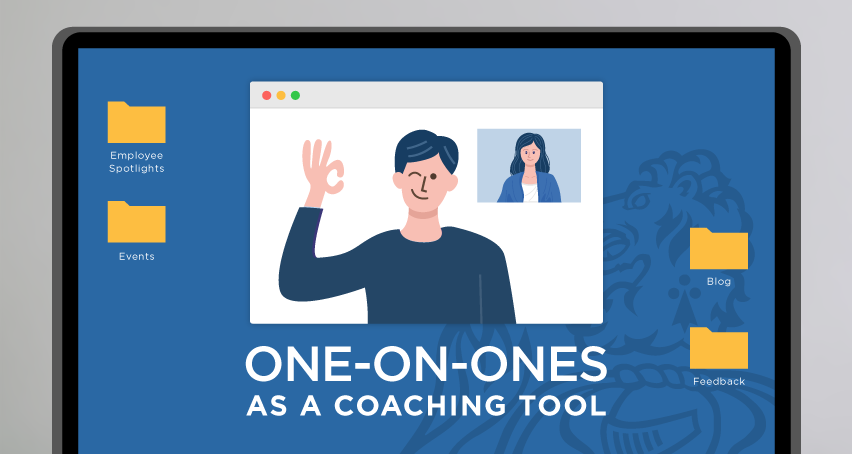When working in a business, setting clear expectations between an individual team member and his/her leader is foundational to effective performance. However, continued and regular follow-up, and supportive coaching, is critical to sustained success. The strongest approach to effective follow-up is a consistent cadence of one-on-one discussions between the employee and her/his leader. These regular one-on-one meetings provide a platform for both follow-up and feedback.
Here are a few high-impact practices that can increase the value each person receives at these one-on-one meetings.
Employees Lead the Meeting
After the employee identifies the areas of discussion for the one-on-one discussion, s/he should create a comprehensive agenda. The employee should send the agenda to their manager at least 24 hours prior to their discussion so the leader is prepared to contribute to a successful one-on-one. Employees lead the meeting, and both the employee and the leader should have the opportunity to provide feedback regarding the performance in their respective roles.
Leaders Actively Listen
One-on-ones should be employee-driven and leader-guided. This way, the employee takes ownership in his/her role in their position and in the company. Even when a leader sees a real-time opportunity for coaching the individual during the discussion, the leader should listen then guide the employee in understanding the gaps and identifying the solution(s). The employee then ultimately owns the solution, which helps them in their implementation.
Coaching Increases Communication
As the leader coaches the employee, trust develops between the leader and the employee as they work through the employee-identified areas for improvement. At the end of the meeting, time should be given to the leader to guide on items not identified by the employee. Oftentimes, this type of coaching allows the leader to uncover blind spots the employee hasn’t identified him/herself.
Follow Up is Key
Once the one-on-one meeting is complete, the employee records follow-up assignments and forwards those to the manager. These items will be discussed in the employee’s next one-on-one so there is opportunity for coaching, accountability and celebration. Development plan updates should be included quarterly to support the employee and leader’s continued growth, and informal, ad-hoc one on ones play an important role in filling real-time gaps and course adjustments.
Traps to Avoid
In addition to the high impact practices outlined above there are a few traps to avoid to keep one-on-ones productive and producing results:
- Leaders must resist the temptation to take control of scheduling one-on-one meetings, creating agendas, leading discussions, and providing follow-up summaries. Employees will be more effective when they own these meetings and tasks.
- Both leaders and employees should avoid frequent rescheduling of one-on-one’s for other activities. One-on-ones should be a top priority for both individuals.
- Preparation of a focused agenda and forwarding it to the leader will allow the leader to come prepared and focused on the one-on-one. Each individual will benefit from the time spent before the meeting.
One-on-one meetings are a great tool for companies to increase their productivity, communication, and grow their company culture. If leaders conduct them properly, employees will feel valued and engaged, and the manager will grow in his/her coaching skills.



